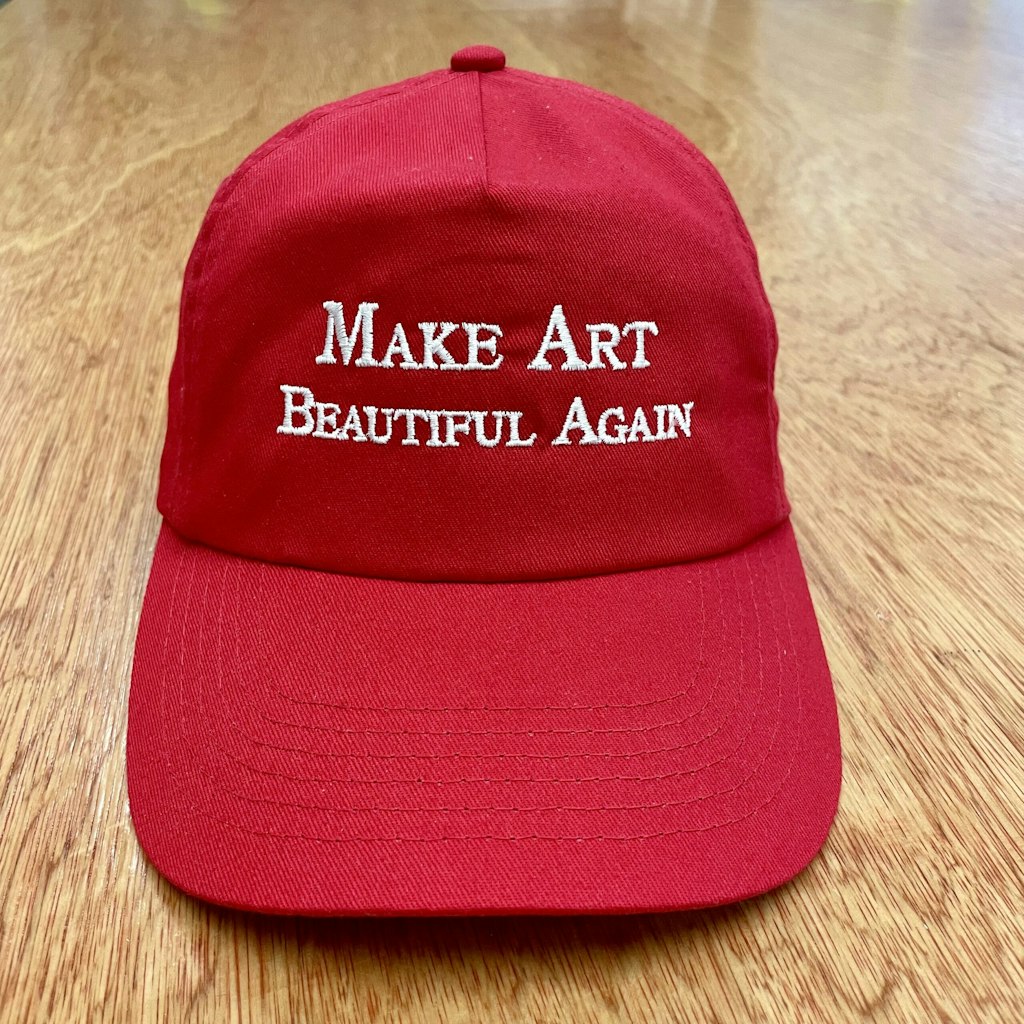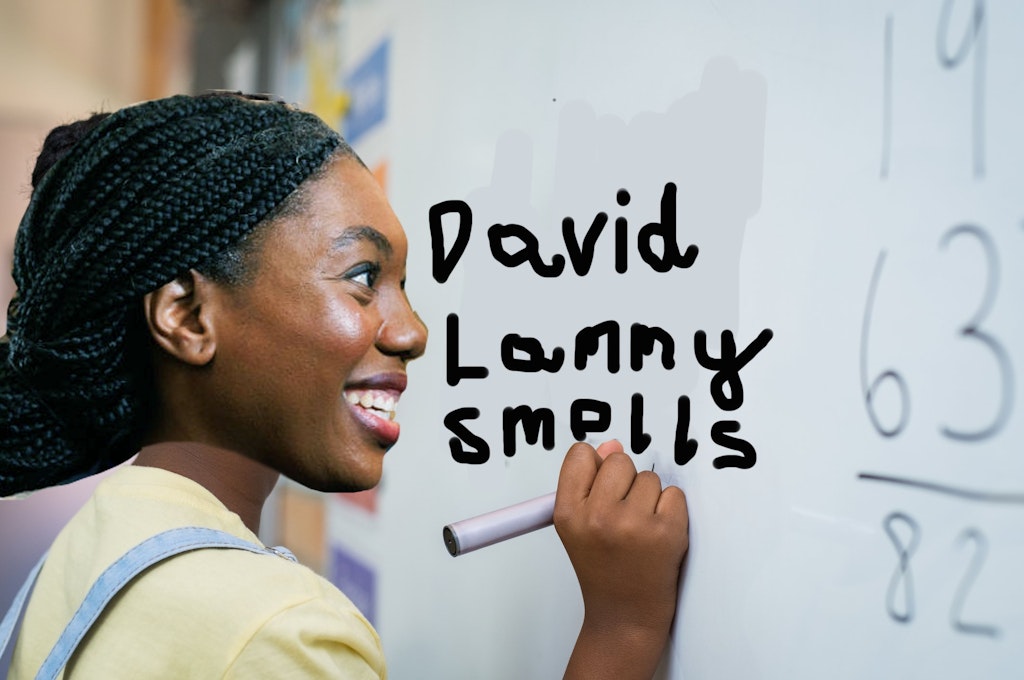The iconoclast’s last defence
Artistic excuses for Just Stop Oil are confused and opportunistic
Hardly a week goes by without an activist glueing themselves to a painting or dousing another with soup. Some people still find this upsetting, but they are wrong to do so. Art history is full of iconoclasm! And art is all the better for it! So, at least, argued an open letter signed in September by more than a hundred artists, curators, and art historians. The institution directors and university lecturers urged judicial leniency in the treatment of two activists whose attack on Van Gogh’s Sunflowers launched Just Stop Oil’s campaign in 2022.
The experts claimed that iconoclasm has been a core practice of the artistic avant-garde for over a century. They worried that the law may hold “a false notion of artistic purity” and thus misunderstand the Sunflowers’ radical artistic potential as the prop to protest. Gustav Metzger and the Chapman brothers are today venerated for destroying art. Just Stop Oil (JSO) should thus be celebrated, not incarcerated for their performance!
The flaws in these arguments are glaring. For one, the art historians defended JSO’s actions as artistic iconoclasm. Surely, the activists are not avant-garde artists by any definition. Secondly, the letters’ arguments were made from art historical authority. But art history bears no weight over energy policy, nor the law governing criminal damage.
Another letter from the founder of the Russian art activist group Pussy Riot pushed the defence. In October, Nadya Tolokonnikova demanded on behalf of Van Gogh himself that the JSO iconoclasts be spared prison time. Van Gogh, she had enterprisingly learned in a dream, thought that nature was far more important than his artistic legacy.
That these are egregious category errors should be plain to everyone. It wasn’t. Our leading artists and historians either misunderstand art history or conflate artistic destruction with politically motivated iconoclasm. In a world where anything can be art and where everything is political, they think there are no boundaries between their discipline and their opinions on public life. Most worryingly, they seem not to have noticed that abolishing these distinctions turns all art into propaganda.
History, indeed, is full of iconoclasm. There has hardly been a culture whose identity did not in some part form through the destruction of the icons of its predecessor. Ancient religions destroyed pagan idols, replacing them with icons of their own. Political movements, likewise, have often waged war on the signs of earlier regimes with a zeal that suggests that images are more powerful than power itself. Even though historical iconoclasm has targeted art, such acts are not in a straightforward sense artistic. It may be more appropriate, therefore, to describe them as systematic religiously or politically motivated vandalism.
The French Revolution brought the two iconoclastic rationales together. The new administration initially employed artists in the destruction of old art. When it understood the material and ideological worth of ancien régime’s art, it turned to building museums for it instead. It is in this latter turn to the preservation and interpretation of otherwise inconvenient political symbols that iconoclasm fully began its relationship with artistic creation. The painter Jacques-Louis David who in the course of the Revolution played the roles of both an iconoclast and a custodian is an example of the artist’s ideological ambivalence towards art history.
However, the artistic iconoclasm invoked by the signatories of the Greenpeace-coordinated letter in defence of the JSO activists is of a very different kind. They mentioned Robert Rauschenberg who erased a De Kooning drawing and Marta Minujín who burned her work in the 1960s. What unites these artists — aside from the obvious fact that they are artists — is that they used destructive acts to make statements of a fundamentally artistic and aesthetic dimension. That quality may be hard to define in the context of destruction, granted, and the word of the art historian does have some weight.
Just Stop Oil’s defacement of The Sunflowers produced no new art
But one doesn’t need to be an art historian to understand that Jake and Dinos Chapman adding cartoon faces to Goya etchings performed a prima facie artistic act. Gustav Metzger’s creation of canvases that would self-destruct in time, was strictly artistic because it relied on the creation of artworks in the first place.
Just Stop Oil’s defacement of The Sunflowers produced no new art unless one absurdly sees their act as a performance akin to the artist Alexander Brenner’s notorious defecation in front of another Van Gogh. And no, the fact that this week’s stunt by Youth Demand at the National Gallery used red paint (for blood and Palestine) while JSO stick to hi-viz orange does not make for an “iconoclast aesthetics”.
The art historians insisted, nonetheless, that in their “expert opinion”, JSO’s action was part of a “well-established tradition of creative iconoclasm”. Given that JSO confused Van Gogh with Warhol, whose work could have been attacked with soup more aptly, such a claim is at best embarrassing.
Any authority the art historians may have clung to was undermined by their reference to the Suffragette Mary Wood’s 1914 attack on a John Singer Sargent portrait. This action was one of many such attacks that contributed to the extension of voting rights to women in Britain. Just Stop Oil’s attacks are directly analogous: they involve criminal damage against a treasured artwork and use the attention the act brings to promote a political position. Wood’s act was not, in any feasible sense, an artistic one, and neither was its intent.
Another uncomfortable parallel is that neither Wood nor Just Stop Oil used artistic means to promote a world organised according to their artistic principles. Wood did not replace Singer Sargent’s work with a painterly vision of sex equality. JSO don’t ever make aesthetic references to the environment they would like to preserve by stopping oil. Their actions are contained entirely within the attacks, keeping the public’s attention on the protesters.
What could an art historical argument in support of Just Stop Oil’s actions look like? One could have suggested that early-20th-century artists and art historians displayed political foresight in response to the Suffragettes’ campaign. But they didn’t. Singer Sargent was, in contrast to the Van Gogh of Tolokonnikova’s dream, said to be dismayed at having his work destroyed. The prominent critics Roger Fry and Sir Claude Phillips condemned the attacks.
There is little doubt that today’s art historians and artists wish to excuse JSO’s actions because they share their political sentiments
The most interesting artistic argument came from the Suffragette Mary Richardson who attacked Velázquez’s Venus in 1914. She spoke movingly about aspects of beauty represented by the subject of her attack that she saw echoed in the figure of Emmeline Pankhurst as the embodiment of the movement’s political goals. There’s no evidence that it was Richardson’s art historical or aesthetic theory that swung it for the Suffragettes. In any case, she is an unlikely ally for JSO (they attacked the Rokeby Venus in 2023) because she notoriously joined the British Union of Fascists in later life. Left to art, women might still not have the vote today.
There is little doubt that today’s art historians and artists wish to excuse JSO’s actions because they share their political sentiments. And we know that art professionals easily confuse their expertise and personal preferences. The imposing 1967 abstract monochrome painting Who’s Afraid of Red, Yellow and Blue III by Barnett Newman was attacked with a knife in the 1980s while on display in Amsterdam’s Stedelijk Museum. This iconoclastic act and the painting’s botched restoration came close to ruining the museum.
What is most striking in the records of this event compiled in a 2018 film by Barbara Visser, however, is the museum management’s curious mix of extreme emotional distress and calculated detachment. When the public and politicians questioned the cost of the repair and the work’s very artistic value, the curators tried to hide that they were fearing for their jobs. They were, however, even less able to contain the horror at witnessing the public attack on their ideology for which Newman’s work was an icon. The Enlightenment reason that charged the museum with the protection of art was as nothing next to the curator’s politics.
We must not rely on art history alone to answer our political questions. Recognising this should comfort Just Stop Oil protesters. Attacking art could work, but only if such attacks resonate with the law and democratic reason. Indeed, another pair of JSO protesters were acquitted in their trial on the grounds of legal proportionality of their action and the climate crisis. Art historians should have no special sway over such matters.
In separating themselves from artists, activists might also beneficially forego the sympathies of clumsy public intellectuals and the class affinities of other art activists. As for artists, sticking to art history might be a win too, because the tightrope walk on the “right side of history” comes with few guarantees. David’s artistic success was initially propped up by his friendship with the revolutionary Robespierre. Post-revolution, the painter had to adjust his politics to secure the patronage of Napoleon. Such about-turns might be harder to perform today. And even if art can be propaganda, should it?
***
Some reflections in this text stem from a seminar on iconoclasm led by Nina Power at Verdurin.
Enjoying The Critic online? It's even better in print
Try five issues of Britain’s most civilised magazine for £10
Subscribe














